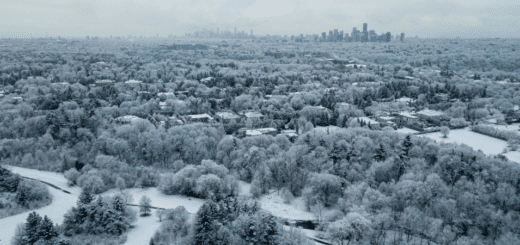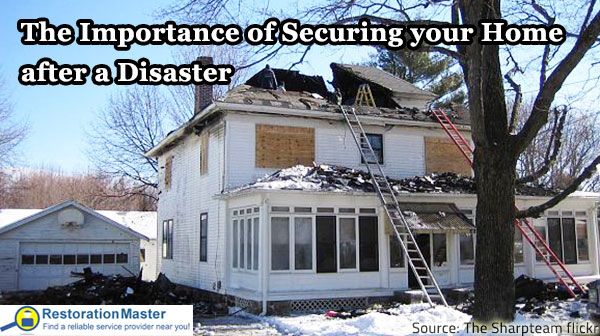How to Prepare Your Home for Hail
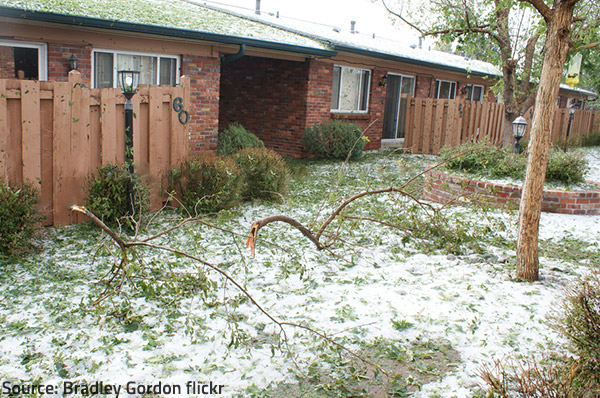
Violent hail storms may be very destructive, so you’d better take proper preventionPrevention refers to actions taken to reduce the likelihood ... More measures in advance.
It is not a rare occurrence for short-lived but violent storms to break within moments on sweltering summer days. Quite often such fearsome storms fade away quickly and do not cause much damage despite their apparent ferocity. There are unfortunate occasions, however, when the tempest doesn’t abate for several hours and the tremendous power of raging winds and heavy rainfall may result in huge material losses and even in severe injuries. This is especially true for hail storms when the ice pellets falling with great intensity can gravely harm plants, animals, building structures, vehicles, and equipment alike. People can also be badly or even fatally wounded if caught in the open during a hailstorm. And while it is not in human power to command the weather or prevent pounding hail stones from damaging your property, you can at least take adequate precautionary measures to minimize the harm and to protect yourself, your family, your pets, and your more expensive or delicate possessions.
How to Prepare for Hail Storms in Advance
Planning ahead can mean the difference between extensive damage and minor remediable problems. A proper preventive strategy will help you considerably reduce the negative effects of inevitable summer storms. Here are the right steps to take in order to prevent hail damage.
Prepare Your Home and Outdoor Area for a Hailstorm
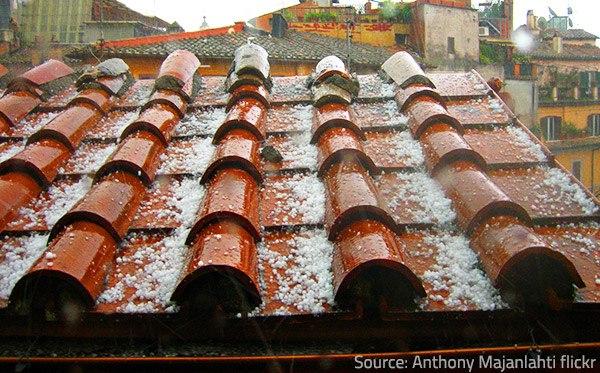
A solid roof will help you avoid severe hail damage to your home.
The condition of your property is one of the most consequential factors in determining the amount of damage a hail storm will inflict on your personal belongings. The integrity of your roof should be your primary concern for it will keep you safe during a storm.
- Inspect and maintain your roof. Inspect your roof regularly and take immediate measures if you notice a problem. Replace broken or damaged shingles without delay and consider installing ones rated as class 3 or 4 which have been proven to withstand harsh hail. Do not neglect seemingly minor defects that may make your roof susceptible to hail damage. Make sure the overall condition of your chimney is good and that it can be properly closed if necessary, and take effective measures to better protect your roof. If you consider an imminent renovation project, you are advised to opt for impact resisting roofing to further reduce eventual hail damage and secure your home.
- Keep your trees and shrubbery well-trimmed. It is very important to eliminate the risk of trees or branches falling on your home during a storm. Maintain all the trees and shrubbery in your yard but pay special attention to branches that are directly over your roof or too close to your windows – in the event of a storm they are most likely to damage your home. Strong wind and hail stones can easily break any weak or dry branches, so be prudent enough to remove them in time.
- Properly maintain your outdoor area and avoid potentially dangerous materials. It is not only falling trees and branches that may cause severe damage to your home – all kinds of debris such as decorative or waste materials blown by the fierce winds during a hailstorm pose a great risk. So keep your outdoor area clean and safe (make it a rule to keep woodpiles under a shed away from the house, etc.). What’s more, you are advised to replace rock or gravel landscaping material with shredded bark or other safe pieces that will cause no harm even when blown by strong winds.
- Keep gutters and drainpipes clear of leaves and debris. Make sure water can drain quickly or your home may sustain water damage in addition to the typical hail damage.
Prepare Yourself and Your Family for a Hailstorm
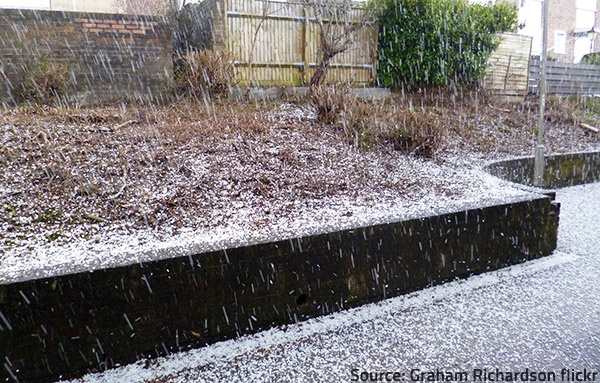
Never stay outside during a hailstorm – the pounding hail stones may hurt you badly.
So, how can you prepare for a hail storm? Having secured your home as well as possible, there is something else you can do ahead of time to prepare for severe hail storms or any other adverse weather conditions.
- Create a disaster preparednessPreparedness is the state of being ready to respond to emerg... More plan. Identify the safest places in your home (an enclosed windowless space, preferably underground, or at least away from doors and windows, under a stairwell or in a hallway, far from furniture or other heavy items that may topple over and hurt you) and the shortest escape routes out. However, always stay under cover during a hailstorm – an escape route may be useful if you need to get out as quickly as possible when the storm is over and the building has sustained too much damage or there is danger of floodingFlooding is the overflow or accumulation of water in areas t... More, etc. Discuss with your family where you will seek shelter if you are caught outside during a storm. Decide on a safe place where all your family members will meet in case you haven’t been together when the storm hit or got separated. Make sure you (and everyone else in the household who is old enough) know how to use the fire extinguishers and how to shut off the utilities, where the main switches and valves are, where your first-aid kit is kept and what numbers to call in case of emergency. Always keep your fire extinguishers in working condition and supply your first-aid kit with all the essentials (don’t forget to regularly replace medications that expire with time). Talk over all these matters with your family and practice your plan of action.
- Prepare an emergency kit. The chance that you will have to survive several days without being able to go out in the event of a hailstorm is really small but you’d better be prepared for the worst. If the structural damage caused by a violent storm is too severe and your home collapses or some other problem occurs as a result of the hail that prevents you from going out, you’d better have sufficient amounts of imperishable food and bottled water, personal hygiene items, a change of clothes, sturdy shoes, work gloves, a blanket, a flashlight with extra batteries, a portable radio, some basic tools, first-aid supplies and prescription medicines, spare keys, some cash, and copies of important documents, as well as all the relevant contact numbers (medical centers, fire department, insurance agencies, neighbors, etc.). A signaling device may also come in handy.
Both your storm plan and emergency kit will be useful if any kind of natural disaster happens, so prepare them carefully and make sure all your family members are aware of the plan and the location of the kit.
Buy Adequate Insurance

Hail damage repairRepair is the act of fixing or restoring damaged property, m... More costs may be very high if your property has sustained extensive hail damage.
Be prudent enough to choose an insurance plan that will cover hail damage repairRepair is the act of fixing or restoring damaged property, m... More costs. Remember that any damage due to supposed negligence on your part will probably not be covered but damage caused by fallen trees and other falling objects, as well as wind damage or a partial collapse of the structureStructure refers to the framework or components of a buildin... More, should be covered by your insurance company. Water damage that occurs when the roofs and the walls are intact, or damage caused by water that backed up in sewers is not compensated by standard insurance policies, so do your best to prevent it. Coverage may or may not be extended to water-damaged electronics depending on the specific factors in your case.
Have in mind that hail damage insurance claims should be made immediately after the storm is over and convincing evidence should be presented (photos and/or videos of any water damage and wind damage at your property). When a representative of your insurance agency comes over for estimates, provide all the relevant information and ask for the required documents and course of action. Do not begin permanent hail damage repairs until you have come to an agreement concerning the cost coverage, but take the necessary measures to prevent further damage. Keep all the receipts you get, not only for the restoration services and materials but also for any other expenses related to hail damage.
What to Do in Case of a Hail Storm
To best prepare for an approaching hailstorm, you need to stay alert and stick to the following crucial steps:
-
- Know the signs of a hailstorm. Dark clouds, strong winds, heavy rainfall, distant thunder and lightning are the typical signs of an imminent storm. If you can notice characteristic white clouds among the dark ones, especially when cold air fronts advance to clash with very hot ones, the approaching storm will probably be accompanied by ice balls;
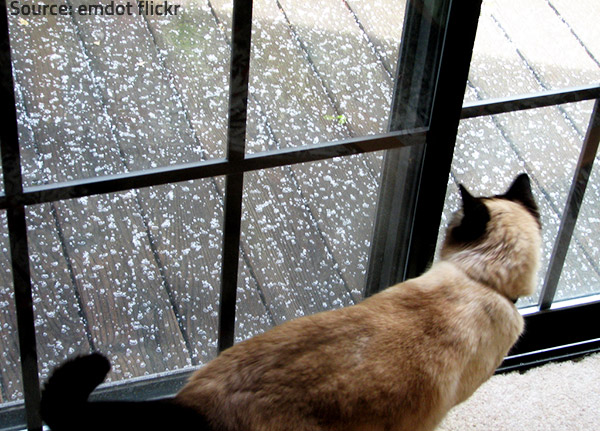
Keep your pets and farm animals, as well as your vehicles and outdoor furniture and equipment, in a safe covered area during a hailstorm.
- Listen for weather updates. The sooner you are aware that a storm is coming your way, the more time you will have to take your family and animal friends to safety and to do your best to reduce the amount of damage caused by the hail;
- Provide shelter for pets and farm animals. Animals are very vulnerable to hail – being repeatedly hit by larger hail stones can leadLead is a heavy metal that can be toxic to humans, especiall... More to severe or even fatal wounds, so take them inside – either in your house or in a well-secured farm building or shed. Make sure your animals are safe before the tempest arrives because it is strongly advisable not to go out during a storm;
- Take any vehicles and outdoor furniture to an adequate covered area. Protect your cars, RVs, boats, or whatever vehicles and large power-driven equipment you possess from the hail. Put them in a garage and if there is enough space, store your patio furniture, lawn chairs, garbage cans, and garden tools inside as well. If not, take them to another enclosed and securely covered area, such as a shed. Remember that if large pieces remain outside during a storm, the wind may pick them up and blow them towards your home, causing severe damage not only to the items but to the house as well;
- Close tightly windows and doors. This will prevent rainwater and flying debris from getting into your home and causing damage inside or hurting someone. Be sure to close the blinds and draw the curtains – if hailstones break the windows, you will have some protection from the shattered glass.
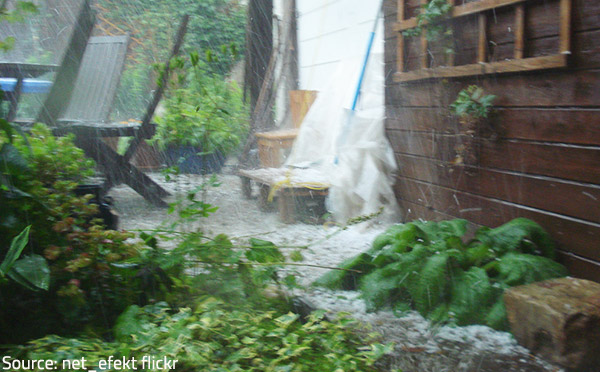
Even if your property was damaged during a hail storm, don’t panic – professional hail damage repairRepair is the act of fixing or restoring damaged property, m... More services will lend you a helping hand.
You can considerably lower the risk of hail damage to your property if you prepare in advance. However, if your efforts failed and your home was damaged during a hail storm, call professional hail damage repair services at the earliest opportunity.











